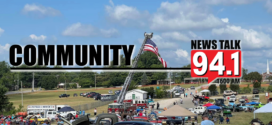For the first time in a decade the USDA updated its Plant Hardiness Map and it shows most of the Upper Cumberland has warmed up.
Putnam County in particular went from a 7a zone to a 7b zone. This means the county’s average lowest temperatures over the last 30 years has raised from a 0-5 degree average to a 5-10 degree average. UT Extension Agent Wayne Key said this is important to note for local gardeners and plant enthusiasts.
“It helps plant growers and landscapers and homeowners and gardeners know exactly which plants are going to work best in which hardiness zone,” Key said. “So we’ve got this map and the zone, and this is what nurseries use when they develop certain breeds of plants, when they tag plants for certain areas.”
Key said it is important for those planting to pay attention to the tags on plants they are buying. Plants are marked with the hardiness number pulled from this map so you know if it will grow well in your area.
“They’re like hydrangea will look great, and they grab it and put it in, and it’s like whoa that’s way to big of a plant in five years, and it’s taking over or maybe its getting too much sun, and it’s just not doing well,” Key said. “Then, you’re calling Wayne at the Extension Office going ‘why does my shrub have sun scald?’. Well it’s not made to sit in the sun for nine hours a day. Those tags are very important.”
Key said the updated map is a teaching tool to remind gardeners to to remember what zone they are in and to check the tag for the plants hardiness number. He said the tag has all the information you need to know when selecting plants.
“I’ve been in nurseries and watched people buying plants, and sometimes they just don’t pay attention to that tag, and that tag has so much useful information as far as where to plant the tree or shrub or landscape plant as far as full sun, partial sun, shade only,” Key said. It’ll also tell them how big the plant gets.”
The updated Plant Hardiness Zone Map is specifically designed for the internet. It allows users to examine plant hardiness zones at much finer scale than before. The ZIP code finder allows users to pinpoint their location.
The southeast in general saw a rise in average low temperatures over the past 30 years. The midwest saw the largest shift in low temperatures.
The USDA notes the data should not be used as reliable representation of overall climate change. It said climate change data uses annual average temperatures recorded over 50-100 years. Their data set only uses a 30-year range and extreme weather conditions, the coldest temperatures of the year.
 News Talk 94.1/AM 1600 Where The Upper Cumberland Talks
News Talk 94.1/AM 1600 Where The Upper Cumberland Talks







